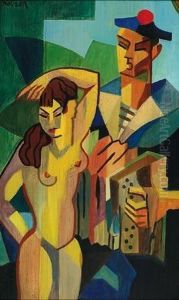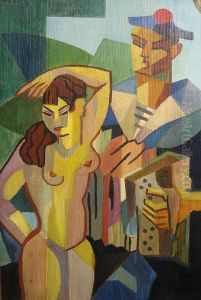Jakob Adolf Holzer Paintings
Jakob Adolf Holzer, often known as Adi Holzer, was an Austrian painter and graphic artist whose works played a significant role in the early 20th-century art scene. Born on July 21, 1879, in Schwaz, Tyrol, Holzer grew up in a time of great artistic change, where the traditional approaches of the 19th century were giving way to modernist movements such as Expressionism and Secessionism.
Holzer’s early life and education in the arts were influenced by the cultural environment of Austria-Hungary, which was a melting pot of artistic ideas and innovations. He likely received his primary artistic training in Vienna, the heart of Austria's cultural life, which was home to the Vienna Secession movement founded by artists like Gustav Klimt, Koloman Moser, and Josef Hoffmann. The movement emphasized individual creativity and sought to break free from the constraints of academic art.
As an artist, Holzer would have been subjected to the various currents of modern art that swept through Europe at the turn of the century. While there is limited information available on his specific contributions to the arts, it can be assumed that he was part of the broader movement of artists who were exploring new visual languages and techniques.
Holzer's career spanned the tumultuous years of World War I and the interwar period, which were marked by a search for new meanings and forms of expression in art. The impact of these events on Holzer's work is not well-documented, but like many artists of his time, he would have had to navigate the complexities of an art world that was deeply affected by the social and political upheavals of the era.
Jakob Adolf Holzer died on December 15, 1938, leaving behind a legacy that reflects the rich and diverse artistic landscape of early 20th-century Austria. While his work may not be as widely known as that of his contemporaries, it remains an important piece of the mosaic that constitutes the history of Austrian art.

